| 1 | Austria was once true bear country |
Today, the alpine country of Austria is similar to most western European nations in that its brown bears are completely extinct, with the only sightings being strays from neighbouring countries. But 500 years ago, it was very different. Austria has 1003 buildings, roads or locations named after bears, similarly to California with its extinct Californian grizzly, where places like bear valley, bear canyon, and bear creek are everywhere.
Bears were once spread far and wide in Austria, from mountainous Tyrol in the west to the flat Vienna province of the far east. This was a time of noblemen, clergy and their commoner servants, who eked out a meagre living through farming and livestock.
While the upper class lived in luxury, most Austrians were incredibly poor, with just a couple of goats and a cow to provide income. Large carnivores like wolves and lynx were feared, and brown bears were viewed as the devil, or symbols of evil. The noblemen weren’t invulnerable either: they relied on the commoners’ farming for their own wealth, and found it entertaining to see the bears be shot anyhow.
During the middle ages, the human population of Austria grew rapidly, thanks to revolutionary farming techniques like livestock grazing in the forest, and felling trees to build new land. After 500,000 years of roaming the snowy valleys of the Austrian alps with impunity, brown bears were officially in trouble.
| 2 | Noblemen encouraged their shooting |

Back then, the rules around hunting would make a WWF employee gasp. All residents of Austria were encouraged to kill large predators by any means imaginable, including guns, poison, pitfalls, nets, snares, and spring-guns.
Austria and its Hapsburg monarchy was often distracted with fighting wars, including the Long War (1593-1606) with the Ottoman Empire, and during these breathers, bear numbers would often rise again in the valleys. However, on June 23rd 1788, the monarchy issued an order calling for the extermination of bears and wolves across the Austrian empire. Bears were widely deemed to be “vermin”, and financial rewards had already been offered since the 1600s.
Surprisingly, precise figures were recorded for the extinction of bears in each Austrian province. In Upper Austria, the last bear fell in 1833, while in Salzburg, the extinction happened in 1838. In Styria, it was 1840, in Lower Austria it was 1842, and in Carinthia, it was 1884. Finally, in 1918, the last Austrian bear was shot dead in Tyrol. The dates were probably off by a few years, with unseen bears hiding in the deep valleys, but broadly accurate nevertheless. They survived a little later than Swiss bears (1904), significantly longer than Germany’s bears (1835), and somehow outlived wolves in Austria, which vanished in the 1860s.
| 3 | Ötschi the celebrity bear |
By the 1970s, all was quiet on the bear front in Austria. Four stray bears were shot dead from World War 2 to 1970, and in 1971, a lone male bear was sighted in eastern Tyrol after wandering up from Trentino.
Shortly afterwards though, there was great outcry when the bear was shot dead. History repeated itself one year later, when a male bear travelled 300KM from Slovenia. He settled down in the Ötscher area of central Austria, one of Austria’s largest areas of primeval forest, with only a few human civilians, and was quickly dubbed Ötschi.
At first, the authorities tried to shoot him with a tranquiliser dart and put him in a zoo, but Ötschi was a particularly shy and reclusive bear. Over the years, sightings were consistent yet very rare, each one accompanied by a wave of public obsession.
The only serious damage Ötschi caused was to beehives. He was lucky to settle near a recently planted raspberry farm, and be watched over by a bear-loving forester and an eccentric duke who commonly left out corn to feed the roe deer. This was before GPS collars, and the foresters used to monitor buckets of corn left out for Ötschi, to check whether he was still alive.
He lasted for two decades, going on to become Austria’s greatest animal celebrity. He was even the mascot of an energy drink company whose slogan was “no Ötschi, no energy”.
| 4 | The early 90s reintroduction project |
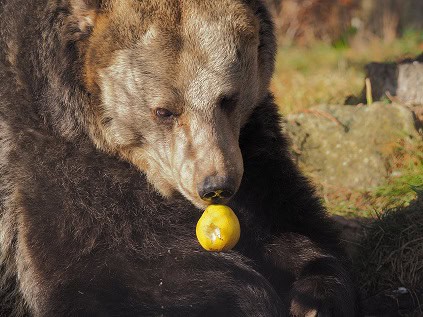
Ultimately, Ötschi was the inspiration for the entire reintroduction project, with the initial idea coming from the same bear-loving forester who protected him. In 1982, the Lower Austrian government launched an initiative called Aktion Bärwild, in cooperation with hunting groups and farmers. A Slovakian scientist with great knowledge of bears in the Mala Fatra region was hired to conduct a feasibility study, and because of the minimal damage called by Ötschi, who had never killed cattle and only a handful of sheep, everyone was optimistic.
The Slovakian scientist concluded that Austria’s wilderness could support 10 bears at first, including 2 adult males, 4 adult females, and 4 sub-adults. The best part was that because a single bear already existed in Austria, Ötschi, the law stated that they didn’t need permission!
It was all steam ahead until 1986, when at the last minute, the hunting association withdrew its support. The government had refused to make a law guaranteeing compensation for farmers whose animals had been killed.
But it wasn’t over yet: WWF Austria took over the scheme. They found an insurance company who would be willing to look after farmers, and on June 8th 1989, WWF employees captured a female bear in Czechoslovakia, in a forested area covered with heavy paw prints. It took 12 hours for the bear convoy to drive to Austria, and at 0:41pm on June 9th, Mira was released into the Ötscher wilds of central Austria.
| 5 | Mira the female bear |
By now, Ötschi had resided in Austria for 15 years. It was hoped that he would breed with Mira, but the WWF feared that the lonely old Ötschi had run out of sexual energy. Thankfully, the opposite was true. In 1990, unproven sightings of the couple wandering the woods together came in, and in 1991, Mira was sighted with 3 cubs.
At this point, no male bears had been introduced to Austria, meaning that the father had to have been Ötschi. Only 1 cub survived until the end of the year, but in early 1993, Mira was sighted with another 2 cubs, again fathered by Ötschi. By now Otschi was very old, and the beloved bear was sighted for the last time in 1994, 22 years after his arrival. Luckily, another male was introduced in 1993, plus a female called Cilka in 1992 who was already pregnant when captured in Croatia.
Meanwhile, Mira’s transmitter mysteriously failed in mid-September 1993, and the WWF was worried enough to send a search party into the woods. They found Mira dead, with broken ribs and signs of heavy internal bleeding. There were no gunshot wounds, and it was concluded that a car had probably struck her, or perhaps a rock slide.
Her three young cubs were now orphans, and were soon spotted in strange places like flower orchards. One cub lucked out by discovering a large roe deer carcass, and when winter came, the trio vanished into hibernation. The whole of Austria kept their fingers crossed, and in March, the cubs reappeared, very much alive.
| 6 | The nightmare year |
Unfortunately, the cubs had also discovered the roe deer corn-feeding stations, and now, they were losing their fear of humans. By summer 1994, Austria’s bear numbers had swollen to between 20 and 25, and bear attacks surged. 49 damages happened in August alone including dead sheep, beehive raids, and bears approaching the houses of people inside.
A public panic ensued. The media’s attitude swung 180 degrees, and they were now resolutely opposed to the bears. There were so many reports of “nuisance bears” that the term was later voted word of the year for 1994 (in German, it’s only one word).
The most notorious bear was called “Numi”. This 4 year old male had massacred a pair of pet rabbits in the garden just 5 metres away from children camped in a tent, and wrought 50 beehive raids and 20 sheep killings in 1993 alone. Numi was a highly intelligent bear, smart enough to pull the plugs out of ponds to eat the small fish inside.
The panic reached fever pitch, until September 10th 1994, when a hunter shot dead a large bear in self defence from 10 metres away on a forest road, when waving and shouting didn’t work. It proved to be a 4 year old male weighing 400 pounds, and almost overnight, the attacks slowed to a trickle. This created an enduring mystery, because while this bear was dark brown, Numi was described as being light. Around this time, Cilka the mother bear vanished without a trace, a mystery which was solved over a decade later.
| 7 | Christl the rape oil snatcher |
The Austrian authorities now had bears coming from all directions. In 1997, a 85 pound female cub was captured rummaging through a roe deer feeding site, which they named Christl. They tagged her ear and subjected her to adverse conditioning to make her fear humans, but soon enough, Christl was approaching human settlements weekly.
In the Austrian alps, rape oil is commonly used as a lubricant in chainsaws by forest workers, and left in canisters overnight. Christl became addicted to the stuff, fearlessly approaching workers in broad daylight. She destroyed chainsaws to get at the oil inside, and broke into huts and houses. One time, she butchered a motorcycle and completely destroyed the driver’s side of a steamroller. Instead of a salmon specialist or an elk specialist, Christl had become a rapeseed oil can specialist.
By spring 1998, Christl was back, and even rubber bullets wouldn’t deter her quest for rapeseed oil. A fresh radio collar was fitted in May, with the bait, of course, being rape oil.
One day in June 1998, Christl’s monitor suddenly went quiet, and forest workers never saw her again. The theory is that she was illegally poached. 20 brown bears remained in Austria at this point, but things were going wrong. Mariedl and Mona each had three cubs, all of which rapidly lost their fear of people. The roe deer corn was a huge problem – the original bears passed this easy food source down to their children, and ultimately their grandchildren.
| 8 | 21st century arrives, bears in danger |
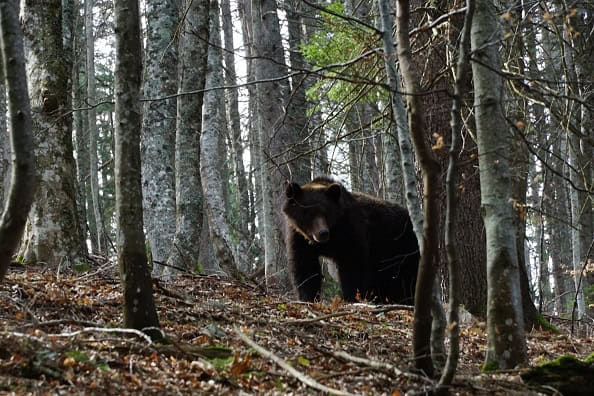
With the dawn of the new millennium, the Austrian bear project was going truly off the rails. The population had held steady until 1999, but now, it was falling off a cliff. The WWF devised an ingenious tracking method – a mixture of blood and fish scraps with such an overpowering smell that you’d remember it for years.
For bears, however, it was an irresistible mimic of a dying animal carcass in the wild. The bait was set behind a wire fence so that the bears crawling underneath would make it through, but lose several hairs in the process.
Through genetic testing, the WWF revealed that 7 bears disappeared without a trace in 1999, followed by 2 bears each in 2001 and 2002. In 2003, no trace could be found of the female bear Mona who had mothered 11 cubs. What was happening? Illegal poaching was partly blamed, and in 2007, an old mystery was finally solved. Hearing rumours, conservationists headed to the house of a hunters’ widow, and discovered a giant stuffed bear as a decoration. Genetic analysis proved this to be Cilka, the mother bear who disappeared in 1994.
Wildlife biologist Felix Knauer despaired, arguing that Austria had the habitat to support 100 brown bears. Various natural catastrophes were also to blame, including an unlucky avalanche which took out Rosemarie in 2002. 2 more bears disappeared in 2007, and from the bright new dawn of 1972, the Austrian government was scrambling to stop the second extinction of the brown bear.
| 9 | Last bear dies, 2012 |
In early 2012, the WWF declared that the Austrian population of brown bears was extinct. There was still the occasional straggler coming across the Italian and Slovenian border in the far south, but the true central Austrian population in the limestone alps was no more. The last bear was Mortiz, born in 2001 as the son of the Djuro, the first male bear of the reintroduction back in 1993. Djuro himself had lasted longer than most bears, being last sighted in 2009.
Until 2003, Moritz had lived in the Ötscher forests of Lower Austria, before migrating to the Upper Austria/Salzburg region. After 6 years, he moved back to his childhood haunts in 2009. By late 2010 though, the last official sighting of Mortiz was a camera trap image taken on August 3rd which showed the 11-year old bear climbing a tree.
All was calm as Moritz presumably vanished into his hibernation den, which was probably a cave given that the limestone alps of central Austria are packed with them. In 2011, newspaper articles calling him “the last Austrian bear” were common, but in spring, no signs of Moritz came.
Spirits rose when they found some bear hairs on a tree in April, as though he had been scratching an itch, but genetic testing was inconclusive. “We can still hope, but the hope is not great” said bear advocate George Rauer. Ultimately, 2011 saw no pawprints, encounters, fur or dead cattle. Moritz was gone, and so were the central Austrian bears.
| 10 | Hope remains |
Since 2012, however, a new glimmer of hope has emerged. Brown bears never went extinct in the far south of Austria, as the border triangle which spans Slovenia and Italy holds about 7-15 brown bears. These nomads are at risk themselves from higher hunting quotas introduced in Slovenia, but nevertheless, bear experts are optimistic that these southern bears could push northwards into Austria soon, and replenish the central population in a more natural way.
It appears to be happening already, as in 2014, a farmer bumped into a bear in a remote mountain pasture near the town of Lungau in Salzburgerland (central Austria). He moved backwards in a calm manner and fell over, which spooked the bear enough to slash his cheek, before playing dead encouraged the bear to walk off. Officially, there were no brown bears in Salzburgerland. In June 2019, it was the turn of Tyrol in western Austria, when several sheep were killed by a bear in Pitztal and Außerfern.
The main problem with these cross border bears is that they’re all males, which are naturally more adventurous in establishing new terrain, For Austrian bears to flourish more widely again, all it will take is for a couple of bolder females to make the journey northwards, or for the core of female bears in Slovenia to gradually shift northwards. The story of Austrian bears isn’t over yet.
The end… for now.

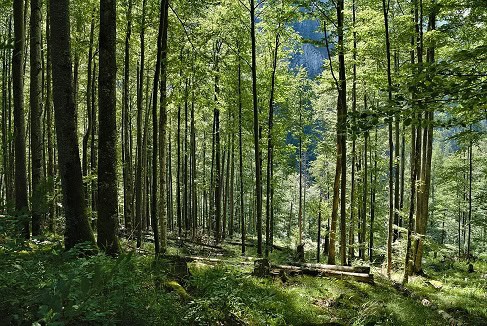
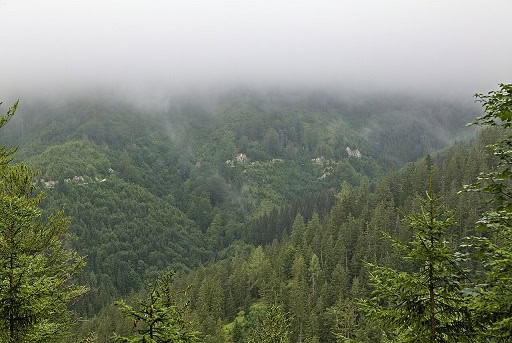
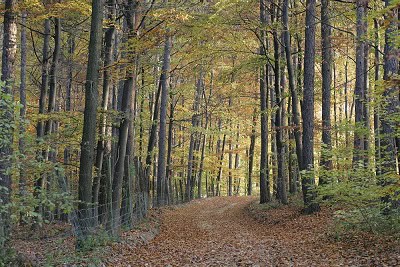
Leave a Reply